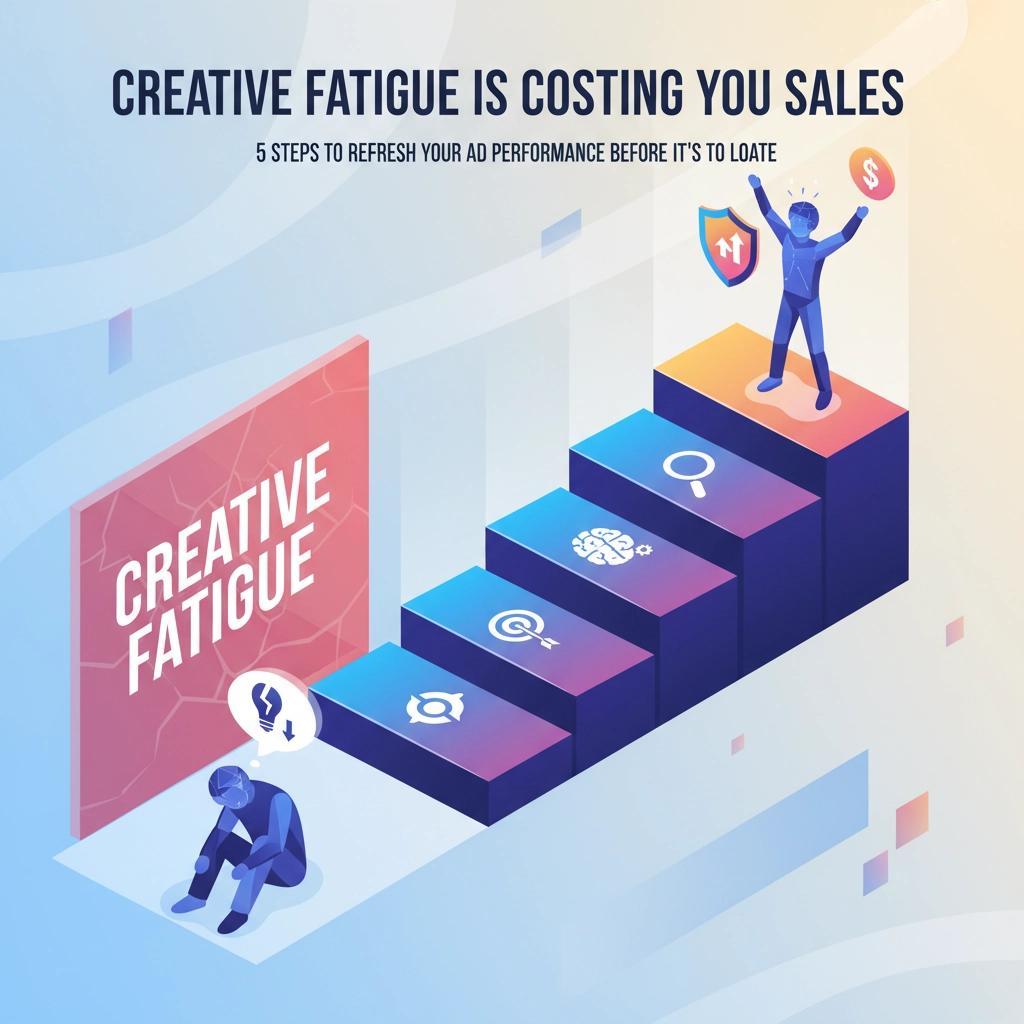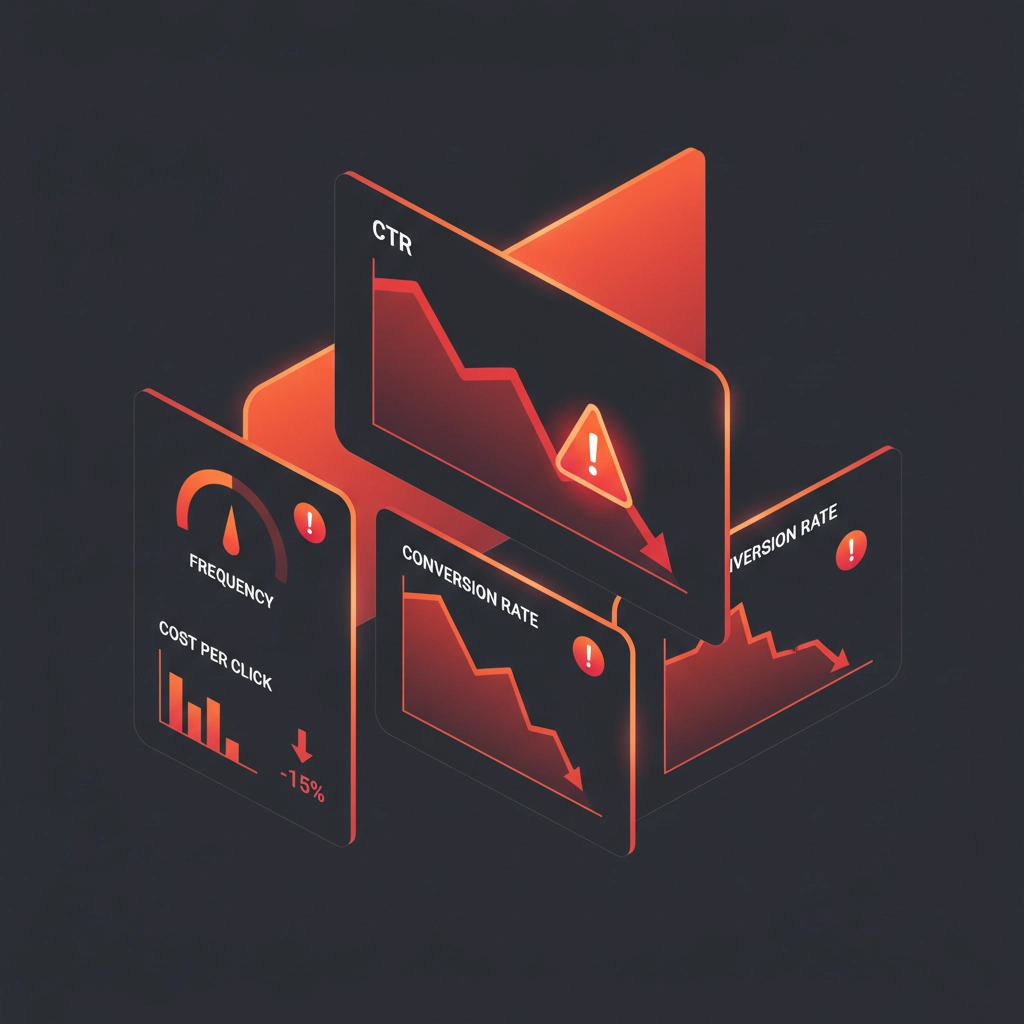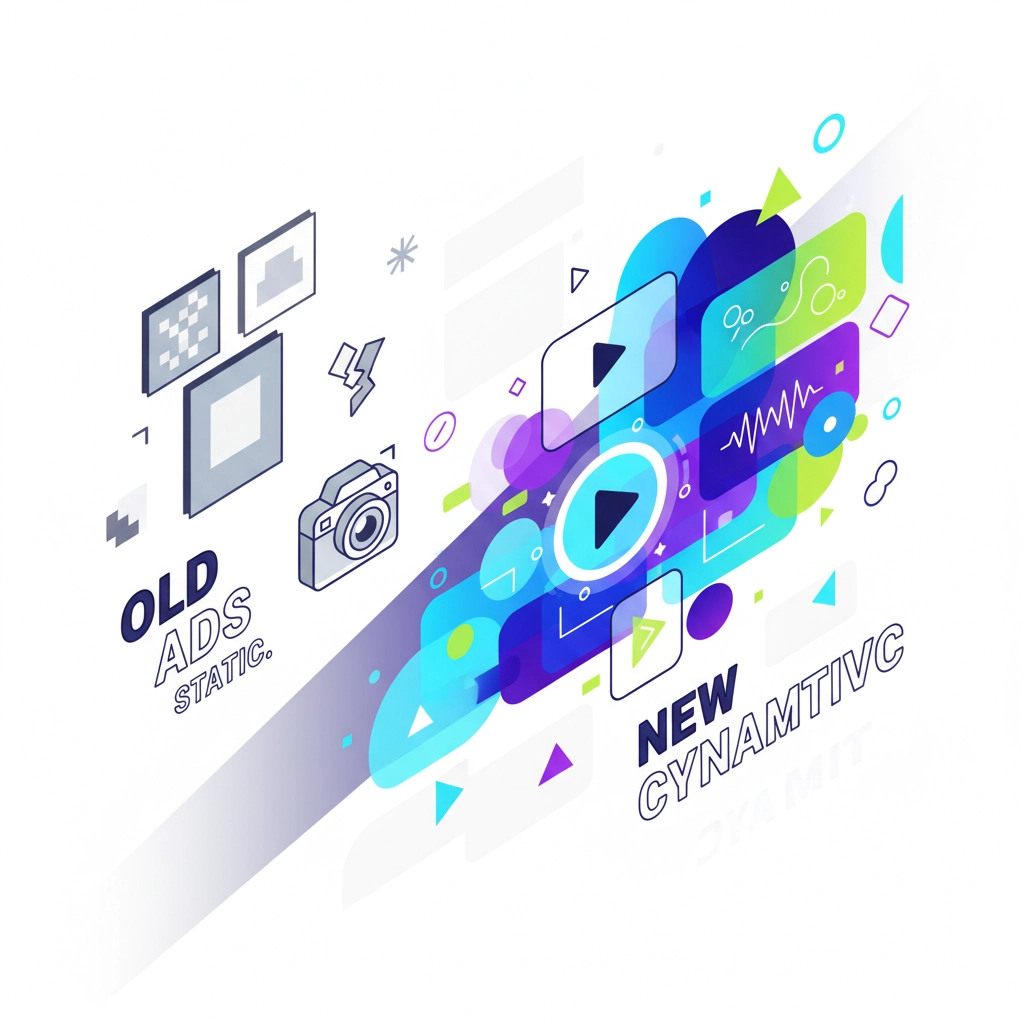
Your ad campaigns were performing beautifully just weeks ago. Click-through rates were strong, conversions were flowing, and your cost per acquisition was exactly where it needed to be. Then something changed. Performance metrics started declining, costs began creeping up, and your once-profitable campaigns are now barely breaking even.
You’re experiencing creative fatigue: one of the most insidious threats to advertising performance that affects over 80% of digital marketers. Creative fatigue occurs when your target audience becomes oversaturated with repeated exposure to the same ad creative, causing engagement and conversion rates to plummet significantly.
The business impact is immediate and measurable. Studies show that after just four repeated exposures to the same creative, the likelihood of conversion drops by approximately 45%. Your cost per thousand impressions (CPM) increases as platforms recognize declining engagement, while your return on ad spend deteriorates rapidly.
Understanding creative fatigue isn’t just about maintaining campaign performance: it’s about protecting your marketing investment and ensuring sustainable growth. The good news? Creative fatigue is entirely preventable and reversible when you implement the right strategies at the right time.
Recognizing the Warning Signs Before It’s Too Late
Creative fatigue doesn’t happen overnight. It develops gradually, and successful marketers learn to identify the early warning signals before performance crashes completely.

Click-Through Rate Decline: Your first red flag appears when CTR drops more than 20% week-over-week without changes to targeting or bidding strategy. This indicates your audience is becoming less responsive to your creative elements.
Rising Cost Per Thousand Impressions: When CPM increases despite unchanged targeting parameters, platforms are recognizing that your ads are receiving less engagement. The algorithm responds by charging more for the same exposure.
Frequency Creep: Monitor your frequency metric closely. Once it exceeds 4-5 exposures per user within a short timeframe, you’re entering dangerous territory. High frequency combined with declining performance is a clear creative fatigue indicator.
Conversion Rate Deterioration: Perhaps most concerning is when CTR remains stable but conversion rates drop. This suggests people are still clicking your ads but aren’t following through with desired actions: often because they’ve seen similar messaging too many times.
Engagement Quality Changes: Pay attention to comment sentiment and engagement types. When responses become repetitive, sarcastic, or negative, your audience is signaling creative fatigue.
When two or more of these signals align, your creative has entered the fatigue zone and requires immediate intervention. Waiting longer only compounds the problem and makes recovery more difficult.
Step 1: Pause Underperforming Ads Immediately
The moment you identify creative fatigue, decisive action prevents further budget waste and audience alienation. Pause ads showing high frequency scores combined with declining performance metrics immediately.
This strategic pause serves multiple purposes beyond stopping losses. It gives your fatigued audience a mental break from overexposed creative elements, prevents negative associations with your brand, and creates space for fresh approaches to capture attention again.
During this downtime, analyze what contributed to the fatigue. Was the creative inherently weak, or did high frequency simply wear out effective messaging? Understanding the root cause informs your refresh strategy and prevents repeating the same mistakes.
Take action now: Review your current campaigns and identify ads with frequency above 4 and declining CTR. Pause these immediately, regardless of historical performance.
Step 2: Launch Fresh Creatives with Strategic Variations
Refreshing your creative approach requires more than minor tweaks: it demands significant visual and messaging differentiation that re-captures audience attention.
Focus on visual transformation first. Replace static images with dynamic video content or animated graphics. Test completely different color schemes, typography styles, and layout approaches. Introduce new emotional triggers: if your previous creative was benefit-focused, try problem-focused messaging instead.

Video vs. Static Testing: Video content typically experiences slower fatigue rates than static images because movement naturally draws attention. However, ensure your video hooks are strong within the first three seconds to maximize impact.
Headline and Copy Variations: Develop multiple headline approaches testing different value propositions. Create urgency-driven versions (“Limited Time Offer”), benefit-focused options (“Save 50% on Marketing Costs”), and curiosity-driven alternatives (“The Marketing Secret Competitors Don’t Want You to Know”).
Call-to-Action Refreshing: Vary your CTAs significantly across different ad versions. Instead of “Learn More,” test “Get Started Today,” “See Results Now,” or “Claim Your Spot.” Different action words trigger different psychological responses.
Remember that refreshing doesn’t always require complete creative reinvention. Sometimes a new opening shot, updated headline, or different background music restores performance effectively while maintaining brand consistency.
Step 3: Implement Systematic Creative Rotation
Rather than relying on single creative executions, build rotation systems that maintain novelty while gathering performance data across multiple approaches.
Develop creative banks with 5-7 different executions testing various angles, visual styles, and messaging approaches. Rotate these systematically rather than running them simultaneously, which can dilute budget and confuse audience targeting.
Weekly Rotation Strategy: Replace your primary creative every 7-10 days, regardless of performance. This proactive approach prevents fatigue before it develops while maintaining consistent exposure to fresh messaging.
Performance-Based Rotation: Monitor daily performance metrics and rotate creatives when CTR drops below predetermined thresholds. This reactive approach works well for campaigns with sufficient budget to support continuous monitoring.
Seasonal and Event-Based Rotation: Align creative refreshes with holidays, industry events, or seasonal trends. This approach provides natural reasons for creative changes while maintaining relevance.
Create systematic processes for creative development, approval, and deployment. Successful rotation requires having fresh assets ready before current creatives fatigue, not scrambling to create new content after performance declines.
Step 4: Control Frequency While Expanding Reach
Effective frequency management prevents creative fatigue while maximizing campaign reach and effectiveness. The key lies in balancing exposure optimization with audience expansion.
Monitor both frequency and reach metrics together rather than in isolation. Ideally, both should increase proportionally: rising frequency with stagnant reach indicates you’re oversaturating the same audience segment instead of expanding to fresh prospects.

Frequency Caps Implementation: Most major platforms offer frequency capping features. Set limits of 3-4 exposures per person per week to maintain effectiveness without oversaturation. Adjust based on your creative lifecycle and campaign objectives.
Audience Expansion Tactics: When frequency rises above optimal levels, expand your target audience parameters. Increase age ranges, add related interest categories, or incorporate lookalike audiences based on your best customers. Fresh audiences haven’t experienced fatigue with your current creative.
Geographic and Demographic Diversification: Test your successful creatives in new geographic markets or demographic segments. What works for one audience segment often performs well for similar groups without the fatigue factor.
Dayparting and Scheduling Optimization: Distribute ad exposure across different times and days rather than concentrating delivery. This natural frequency distribution prevents oversaturation while maximizing reach efficiency.
Step 5: Align Refresh Rates with Budget and Creative Lifecycle
Every advertisement has a natural performance lifecycle, and understanding this cycle enables proactive creative management rather than reactive crisis response.
Higher advertising budgets drive increased frequency, which naturally shortens creative lifespan and requires more frequent refreshes. Campaigns spending $1,000 daily need creative refreshes every 5-7 days, while smaller budgets can maintain creative effectiveness for 2-3 weeks.
Budget-Based Refresh Scheduling: Calculate your daily spend per audience size to determine optimal refresh frequency. Higher spend-to-audience ratios require more frequent creative updates to maintain performance.
Performance Trend Analysis: Track week-over-week performance changes to identify natural creative decline patterns. Most ads experience 20-30% engagement drops after peak performance periods, signaling refresh timing.
Proactive Creative Development: Build creative refresh schedules into campaign planning rather than waiting for performance declines. Successful marketers develop fresh creative assets continuously, ensuring ready deployment when needed.
Testing Integration: Use creative refreshes as testing opportunities. Each new creative execution provides data about audience preferences, optimal messaging approaches, and visual elements that drive strongest responses.
Measuring Success and Continuous Improvement
Implementing these five steps creates immediate performance improvements, but sustained success requires ongoing measurement and optimization refinement.
Track recovery metrics carefully after implementing creative refreshes. CTR should improve within 24-48 hours, while conversion rates typically recover within 3-5 days. CPM should stabilize or decrease as engagement improves and platform algorithms recognize renewed ad effectiveness.
Document what works for future reference. Maintain detailed records of creative approaches, performance periods, and refresh timing that delivered optimal results. This historical data becomes invaluable for scaling successful strategies across multiple campaigns.
Key Performance Indicators to Monitor:
- Week-over-week CTR improvements
- Cost per acquisition recovery rates
- Frequency stabilization metrics
- Audience engagement quality changes
- Overall campaign ROI restoration
Taking Control of Your Ad Performance
Creative fatigue represents one of the most controllable threats to advertising performance. Unlike algorithm changes or competitive market shifts, creative fatigue stems entirely from decisions within your control: making it completely preventable with proper strategy implementation.
The five steps outlined here: pausing underperforming ads, launching strategic creative variations, implementing systematic rotation, controlling frequency while expanding reach, and aligning refresh rates with campaign characteristics: create comprehensive protection against creative fatigue while maximizing advertising effectiveness.
Remember that creative fatigue prevention requires consistent attention and proactive management. Waiting until performance declines significantly makes recovery more difficult and expensive. Instead, build creative refresh cycles into your standard campaign management processes.
Your audience craves novelty and fresh messaging. Delivering consistent creative innovation not only prevents fatigue but strengthens brand perception and audience engagement over time. The marketers who master creative refresh strategies maintain competitive advantages while their competitors struggle with declining performance.
Start implementing these strategies immediately. Review your current campaigns, identify fatigue warning signs, and begin developing fresh creative assets for systematic deployment. Your advertising performance and bottom line depend on taking action before creative fatigue costs you more sales.
Want expert advice or a fresh creative strategy for your ads? Email robert@digitaltrafficfactory.com or call 203-217-9496 and let’s make your marketing work smarter!
